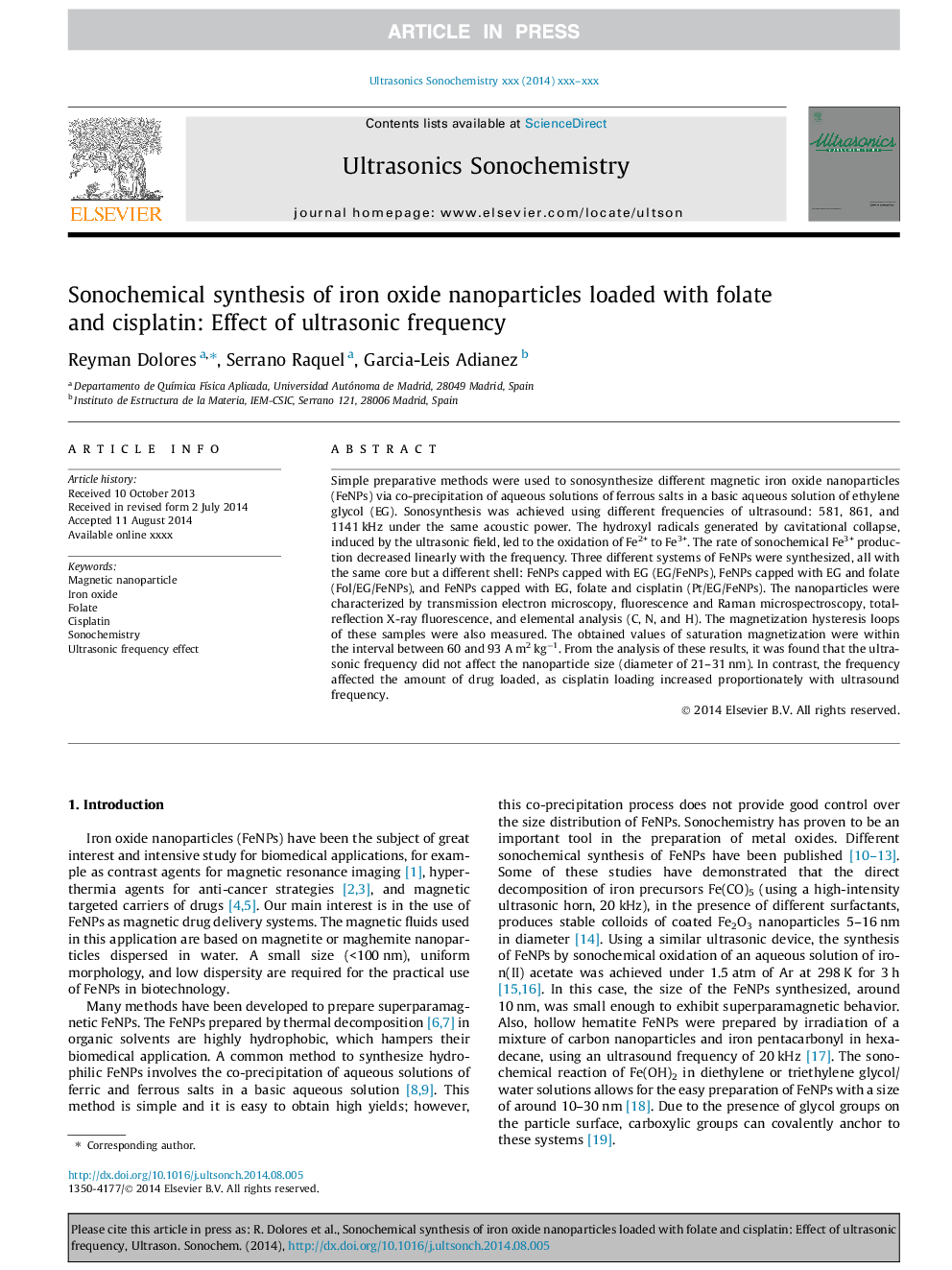| Article ID | Journal | Published Year | Pages | File Type |
|---|---|---|---|---|
| 7704198 | Ultrasonics Sonochemistry | 2015 | 8 Pages |
Abstract
Simple preparative methods were used to sonosynthesize different magnetic iron oxide nanoparticles (FeNPs) via co-precipitation of aqueous solutions of ferrous salts in a basic aqueous solution of ethylene glycol (EG). Sonosynthesis was achieved using different frequencies of ultrasound: 581, 861, and 1141Â kHz under the same acoustic power. The hydroxyl radicals generated by cavitational collapse, induced by the ultrasonic field, led to the oxidation of Fe2+ to Fe3+. The rate of sonochemical Fe3+ production decreased linearly with the frequency. Three different systems of FeNPs were synthesized, all with the same core but a different shell: FeNPs capped with EG (EG/FeNPs), FeNPs capped with EG and folate (Fol/EG/FeNPs), and FeNPs capped with EG, folate and cisplatin (Pt/EG/FeNPs). The nanoparticles were characterized by transmission electron microscopy, fluorescence and Raman microspectroscopy, total-reflection X-ray fluorescence, and elemental analysis (C, N, and H). The magnetization hysteresis loops of these samples were also measured. The obtained values of saturation magnetization were within the interval between 60 and 93Â AÂ m2Â kgâ1. From the analysis of these results, it was found that the ultrasonic frequency did not affect the nanoparticle size (diameter of 21-31Â nm). In contrast, the frequency affected the amount of drug loaded, as cisplatin loading increased proportionately with ultrasound frequency.
Related Topics
Physical Sciences and Engineering
Chemistry
Chemistry (General)
Authors
Reyman Dolores, Serrano Raquel, Garcia-Leis Adianez,
